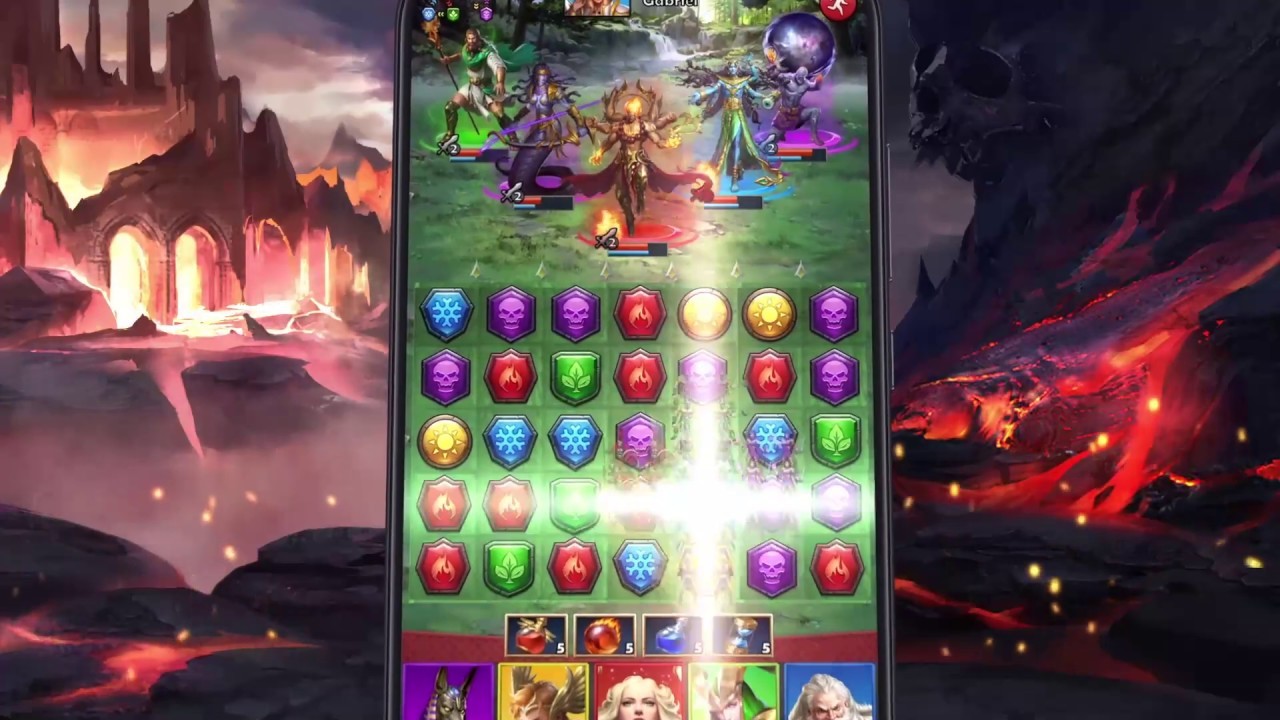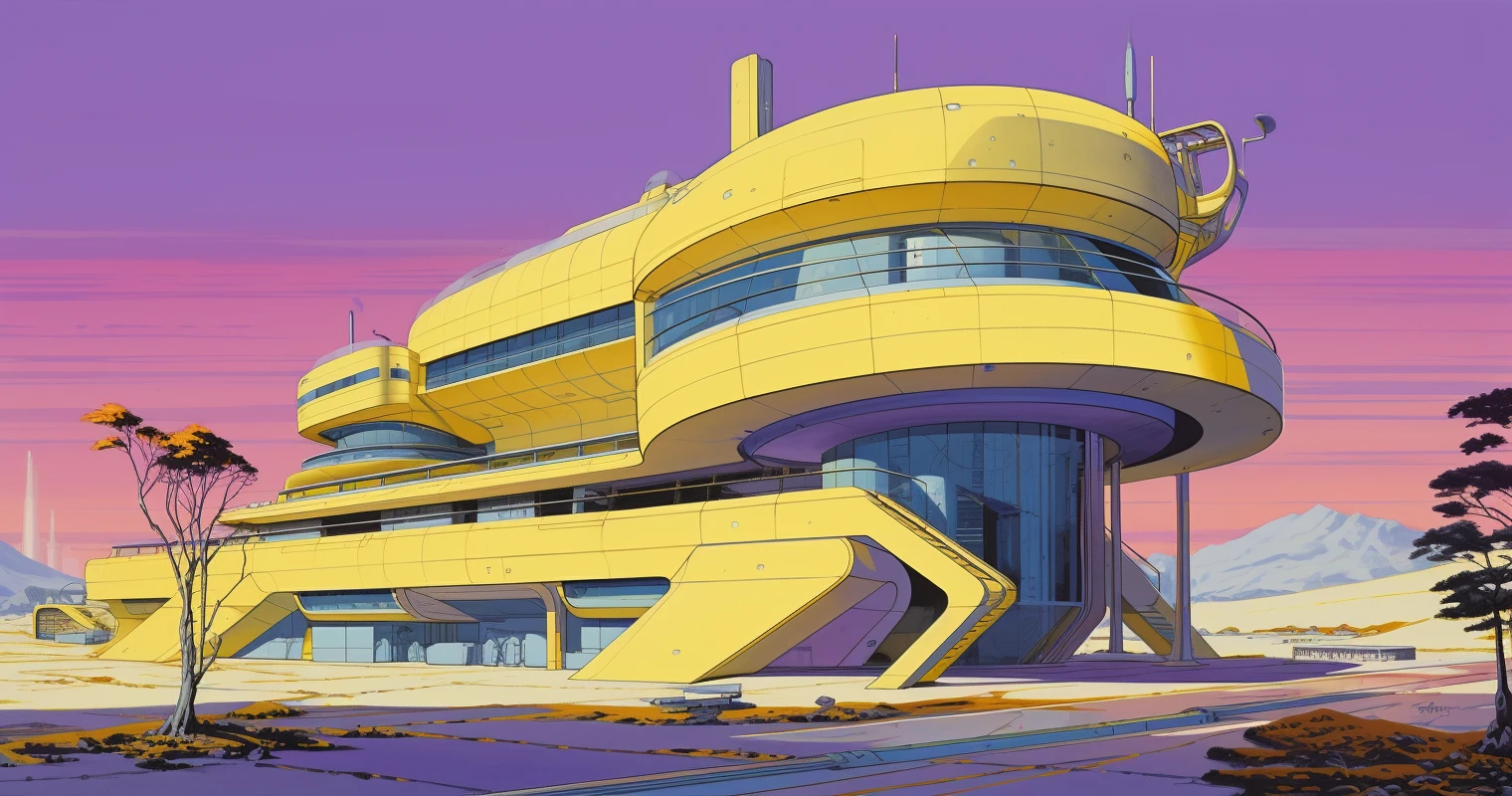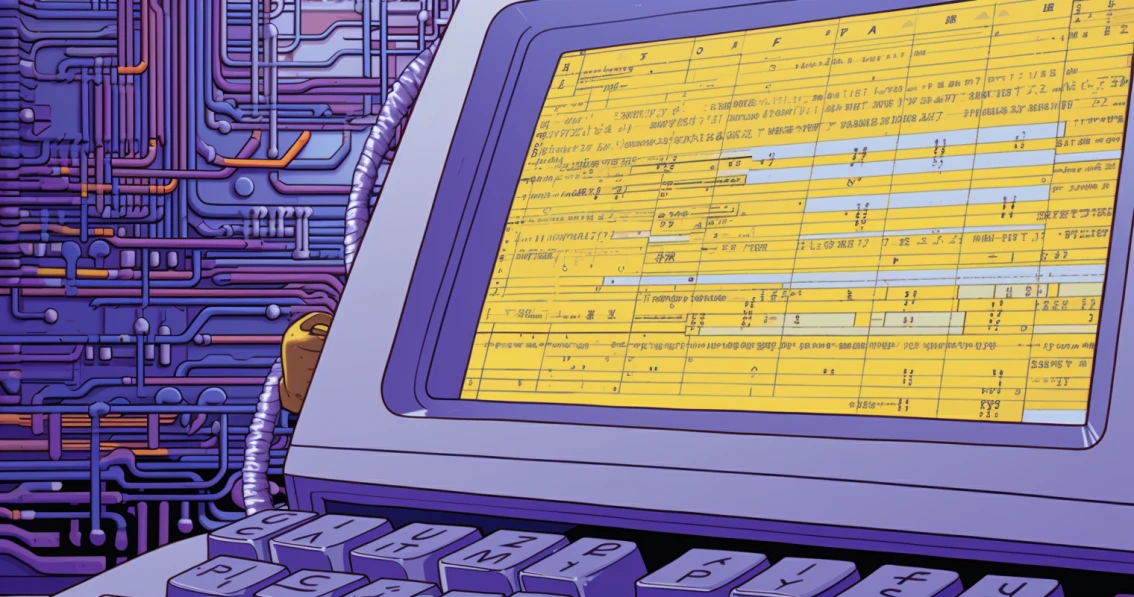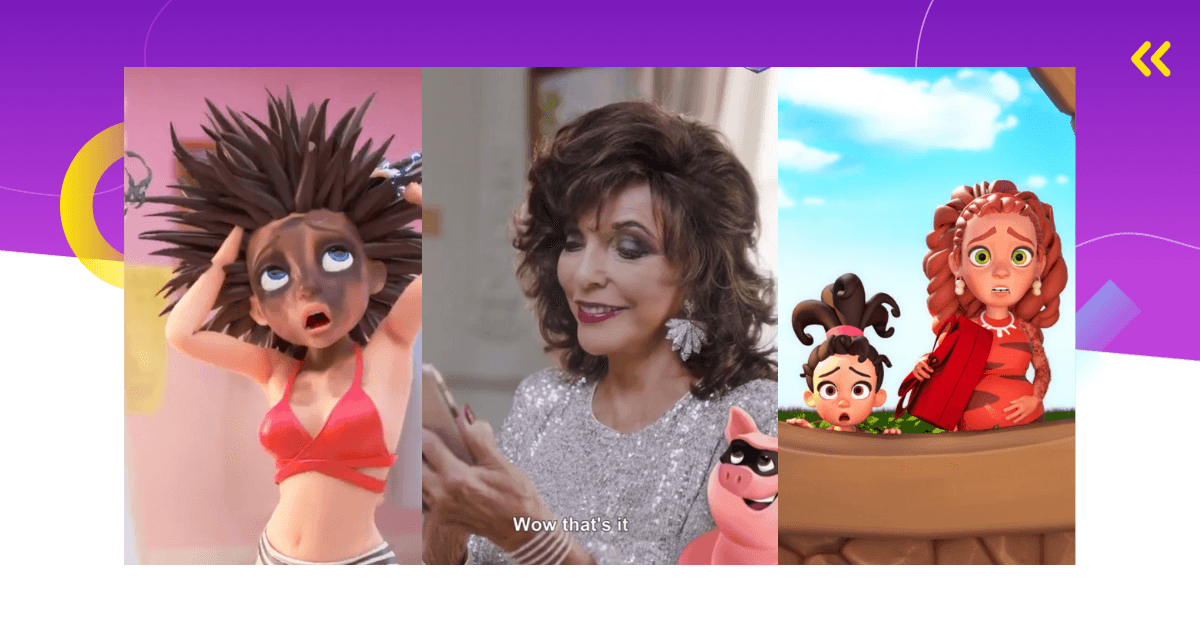Let’s be honest: most mobile game ad creatives don’t flop because the idea was bad. They flop because they weren’t built for the way people scroll.
At Udonis, we’ve tested thousands of creatives for top mobile games. The best-performing ones fall into five key categories. This is the framework we use to systematically find winners – and kill what doesn’t convert.
If you’re still testing random ideas, you’re wasting time. These are the five types of ad creatives every mobile game should be running on repeat.
1. Player POV: Let Them Feel It
If you’re only showing your game from a bird’s-eye view or tossing up a generic highlight reel, you’re missing the point.
People don’t want to watch your game – they want to feel what it’s like to play it.
That’s exactly what Player POV creatives are built for.

This style puts the viewer in the driver’s seat. It’s the difference between watching someone else solve a puzzle… and feeling the pressure of solving it yourself. The swipe, the tap, the near-miss – it all plays out like it’s happening to you. That’s what makes it so powerful.
We’ve run thousands of these at Udonis. They’re almost always in the top tier of performance. Why? Because they don’t look like ads. They look like you accidentally opened the game yourself.
But here’s the key – they have to be built intentionally. You can’t just screen-record some gameplay and call it a day. The best Player POV ads are designed to heighten emotion and trigger a reaction. Think: “I could’ve made that shot,” or “No way that just happened,” or “Wait, what would I do here?”
We usually build these around one of three emotional beats:
- Tension – You’re one move away from a win or total failure.
- Timing – The player barely pulls off something clutch or whiffs it badly.
- Temptation – There’s a juicy reward or shortcut that’s just within reach.
Sometimes we add simple UI overlays like fake hands tapping the screen, progress bars, or flashing buttons to push that immersion even further. But we always keep it grounded. The moment it feels too fake or overproduced, the effect breaks.
The other reason this format works so well? It scales.
Once we know the emotional core of a game, we can crank out dozens of POV variations with different outcomes, pacing, or difficulty levels. It’s a rinse-and-repeat engine for fresh creatives that don’t feel repetitive.
And if your game is skill-based or reaction-driven, these ads are a no-brainer. They’re not just engaging – they’re competitive.
Viewers want to beat what they just saw on screen.
So if you’re not already running Player POV ads, now’s the time. Because nothing converts like a creative that makes someone feel like they’ve already played – before they even click download.

2. Meme Bait: Engineered to Be Shared
Let’s be honest – your ad is competing with memes, not other games.
Every time someone scrolls past a mobile game creative, it’s not because they weren’t interested in gaming. It’s because the ad didn’t earn their attention. That’s where meme-style creatives come in. These are your scroll-stoppers. Your icebreakers. Your ticket into the feed without looking like you’re trying too hard.
At Udonis, we treat meme ads like content first, ad second. The goal isn’t to show off your graphics or explain the game’s features. It’s to get someone to stop and watch, maybe even laugh, nod in recognition, or send it to a friend. And the fastest way to do that?
Tap into formats and humor people already recognize.
Think: “Me vs. The Boss” side-by-sides, “When you finally beat level 99,” or “POV: You thought this level would be easy.” These formats are native to TikTok, Reels, and YouTube Shorts, and when you slot your gameplay into them, you’re meeting the viewer where they already are.
But here’s the catch – this only works if you stay on trend.

Keep an Eye on Trends
We keep an internal meme tracker that’s updated weekly with current viral sounds, formats, punchlines, and visual tropes. Our editors don’t guess what’s funny – they follow what’s working right now. Then we adapt those formats to fit the game.
The magic happens in the pairing. You take a universally relatable feeling – rage quitting, false confidence, mindless grinding – and plug it into the game’s unique moments. Done right, it doesn’t just get a laugh. It drives installs because it feels real.
Even better?
Meme ads get shared. Stitched. Duetted. That kind of organic engagement doesn’t just drop your CPIs – it extends your reach beyond the media budget. We’ve seen campaigns where 20%+ of views came from shares alone.
One important thing to remember: don’t force it. If you try to slap a game onto a meme that doesn’t fit, it’s going to feel like a brand trying to be cool. And nothing kills performance faster than that.
So if your ads are starting to feel stale, meme bait is your antidote. It’s fast to produce, fun to watch, and it gives you creative momentum without needing massive budgets.
In a world where attention is currency, humor wins. Every. Time.
3. Fake UI: Built to Overstimulate
Fake UI ads are loud, messy, and completely unrealistic – and that’s exactly why they work.
These creatives are engineered to overwhelm. Flashing buttons. Giant combo chains. Blinking arrows. Weird upgrade options. Everything on screen is designed to spike attention and hold it for just a few more seconds. And in that time, the viewer gets the hook.
Now, to be clear, we’re not faking the game itself. We’re amplifying what’s already there. If your gameplay includes upgrades, we exaggerate them. If there’s a decision point, we make it dramatic. And if something blows up, we make it explode.
At Udonis, we’ve used this format to test dozens of gameplay concepts before full production. It’s insanely effective for soft launch, where you need to figure out which mechanics actually appeal to new users. We’ve run fake UI ads that outperformed live-action UGC and polished cinematic trailers, just because they nailed the core mechanic in a hyper-exaggerated way.

How We Build Controlled Chaos
It starts with isolating the moment of maximum tension. A countdown about to hit zero. A player forced to pick between two risky options. A skill bar filling just in time. We take that moment, then pump it full of stimuli: overlays, VFX, zooms, bold text, even sound cues.
What you end up with is a visual overload that says, “This game is intense,” even if the actual moment was just a simple tap.
We also build these with modular components, so one gameplay clip might get five or six different UI treatments. One emphasizes the decision. Another dramatizes the reward. Another teases a fail state. That lets us run A/B tests that tell us not just if the creative works, but why.
And let’s not forget: these are fast. Because they’re post-production heavy, we can reuse gameplay assets and just remix the UI elements on top. That’s a huge win when you need creative volume without reinventing the wheel.
If you’re worried about misleading players, don’t be. The best fake UI ads don’t lie, they amplify. They create a stylized version of the real experience, designed to hook attention in the feed. And honestly? That’s what your competition is doing already.
So stop playing it safe. Turn up the chaos because subtle doesn’t stop the scroll.

4. UGC-Style: Ads That Don’t Feel Like Ads
There’s a reason this format is dominating TikTok, Instagram Reels, and YouTube Shorts – it doesn’t look like advertising.
UGC-style ads mimic the look and feel of real user content.
Think: selfie videos, voiceovers reacting to gameplay, screen recordings paired with casual commentary. The production quality is deliberately low-fi, and that’s the whole point. It feels like something your friend would send you, not something a brand paid to show you.
We’ve tested hundreds of UGC variations at Udonis, and they consistently punch above their weight. Especially for early funnel campaigns. The magic comes from believability. If someone thinks, even for a second, “Wait, is this a real person showing me this game?” – you’ve already won.
UGC That Converts Is Never Random
Now, don’t confuse “authentic” with “unplanned.” The best-performing UGC-style ads are tightly structured, especially in the first few seconds. That hook matters more than anything else.
Some of the intros that have crushed for us include:
- “Okay, why is this actually fun?”
- “Not me playing this for 3 hours straight…”
- “I swear I downloaded this as a joke…”
These are scripted to sound unscripted. That’s the sweet spot.
We also use a mix of real creators and AI-generated avatars to scale production fast. Both have their place. Real humans add emotional range. AI avatars let us test variations at volume with different tones, accents, and formats. Either way, we’re not guessing – we’re testing. Hooks, pacing, visuals, voiceover tone. It all gets optimized.
And here’s something most advertisers miss: UGC isn’t just for user acquisition. It’s also one of the best-performing formats for retargeting. When someone sees a UGC-style video that mirrors how they naturally consume content, it feels like a soft reminder, not a hard sell.
So if you’re still relying on polished trailers and flashy motion graphics, it might be time to step back and think smaller. More casual. More human. Because the scroll doesn’t care how much you spent.
5. Narrative Hooks: Tell Me a Story I Can’t Scroll Past
If your game has characters, progression, or even just a basic win/lose dynamic, you can tell a story. And when you do it well, it changes everything.
Narrative hooks aren’t about plot twists or deep lore. They’re about starting with a moment of conflict or curiosity – something emotional, something messy – and tying it back to the gameplay.
The goal is to get someone to care before they even know what the game is.
We’ve seen this work again and again. A dramatic breakup that leads into a match-3 revenge game. A tough moral choice that sets up a strategy RPG. A sibling rivalry that tees up a casual puzzle. When the first few seconds of an ad feel like the start of a story, people stop scrolling. They want to know what happens next.

Start with Emotion, Then Drop the Game
The structure here is simple: hook with conflict, pivot to gameplay, end with payoff. If it sounds like the structure of a TikTok video, that’s because it is.
Some of our highest-performing story hooks started with:
- “He cheated… so I downloaded this.”
- “My boss said I’d never make it past level 10.”
- “This game lets you destroy your ex’s house. Watch.”
Do they sound dramatic? Absolutely. But that’s what makes them work. People are drawn to drama, especially when it’s paired with gameplay that pays off the emotion.
And you don’t always need actors or full-blown scripts. We’ve done narrative-style ads using just text overlays, comic panels, or even fake chat messages. The key is to frame the gameplay as part of the story, not just the backdrop.
Here’s the bonus: narrative-driven ads often boost retention. When you attract users who connect with the emotional premise, they’re more likely to stick around and explore the full experience.
We storyboard these like mini-trailers.
Before we record or animate anything, we map the emotional arc: What’s the problem? What does the game let the user do about it? And what kind of ending will feel satisfying (or frustrating enough to drive another attempt)?
This format takes a bit more effort up front, but when it hits, it scales across genres. Puzzle, RPG, simulation, even casual games can benefit from a little storytelling.
Because sometimes, it’s not the mechanic that sells the game – it’s the feeling it gives you.
Final Thoughts: Build Smarter, Not Louder
Most teams hit a wall with creatives because they’re chasing quantity without a system. More ideas, more versions, more edits – but no real framework.
You don’t need 50 random concepts. You need five styles that actually perform, built around how people really interact with ads today.
At Udonis, this framework is our foundation. It’s how we consistently drive results across genres, budgets, and platforms. We don’t chase trends – we build systems. And those systems are what help our partners scale with confidence.
If you’re serious about taking your mobile game creatives to the next level – whether that’s lowering CPIs, increasing volume, or just finally breaking creative fatigue – we’re here to help.
Let’s make ads that don’t feel like ads. Let’s make ads that work.





![Mobile App Market Growth, Size, and Share [2026 Report]](/static/231d355e4558e7604b3988968bd48b56/0ccb9/mobile-app-market.png)

Comments